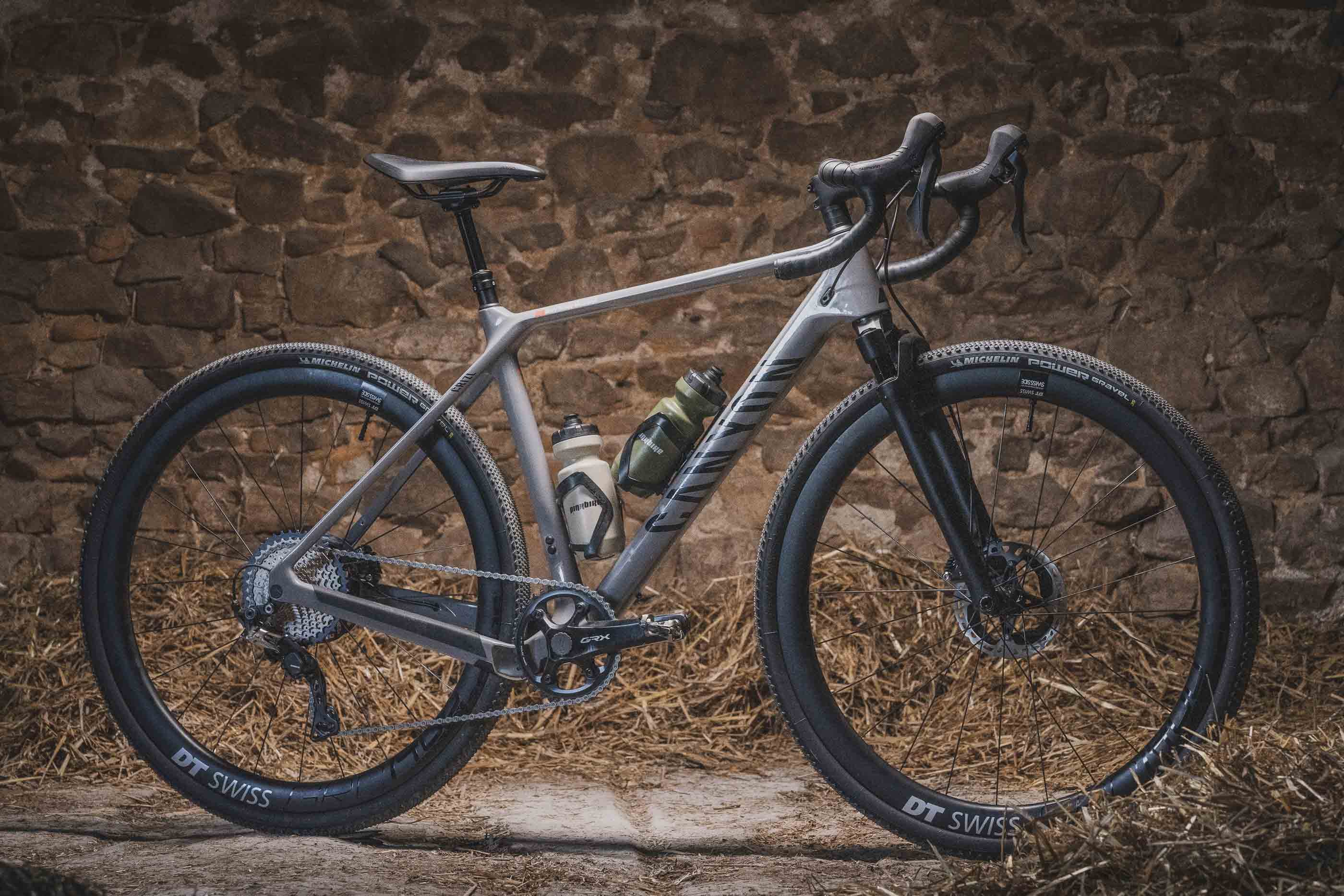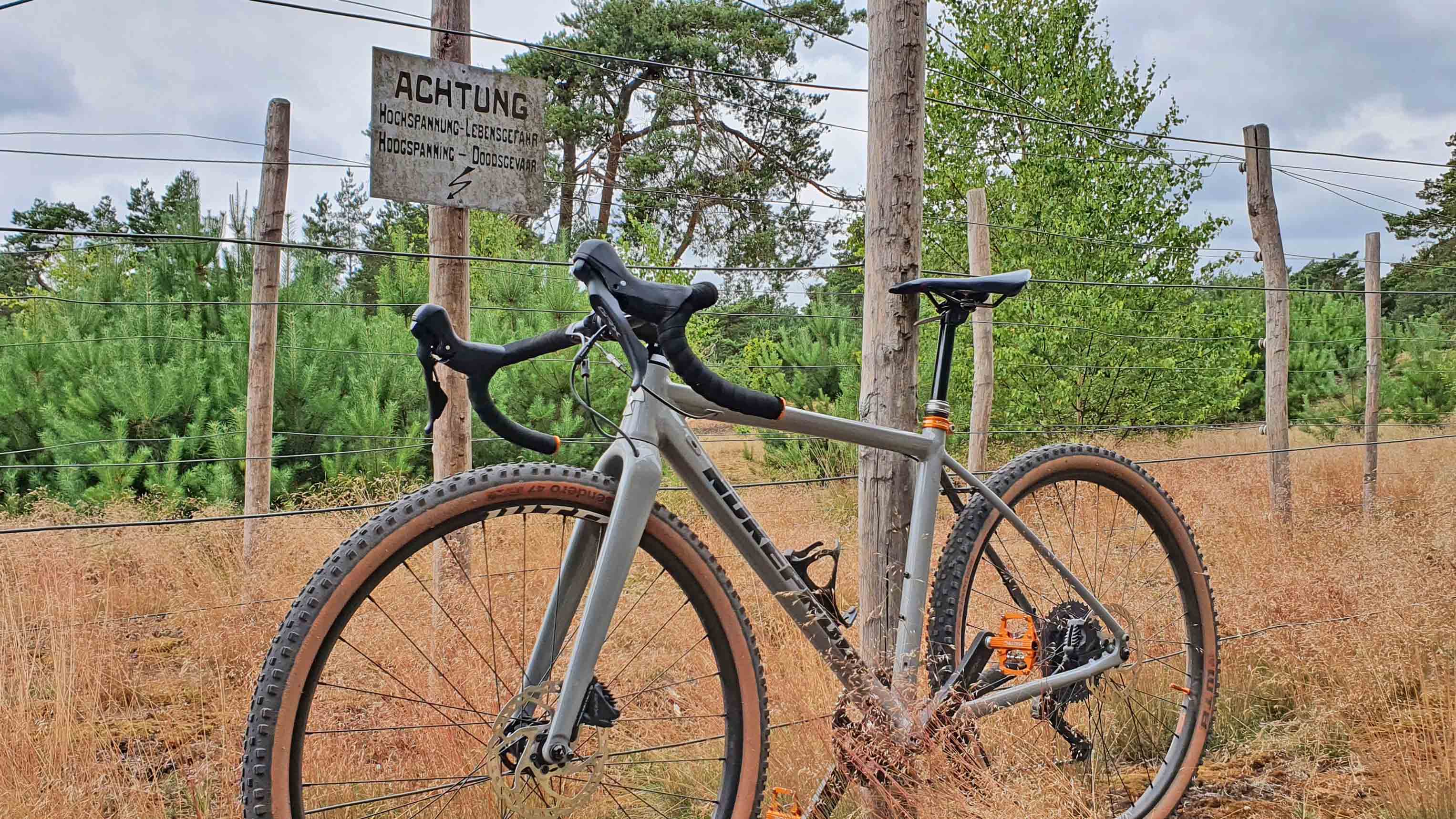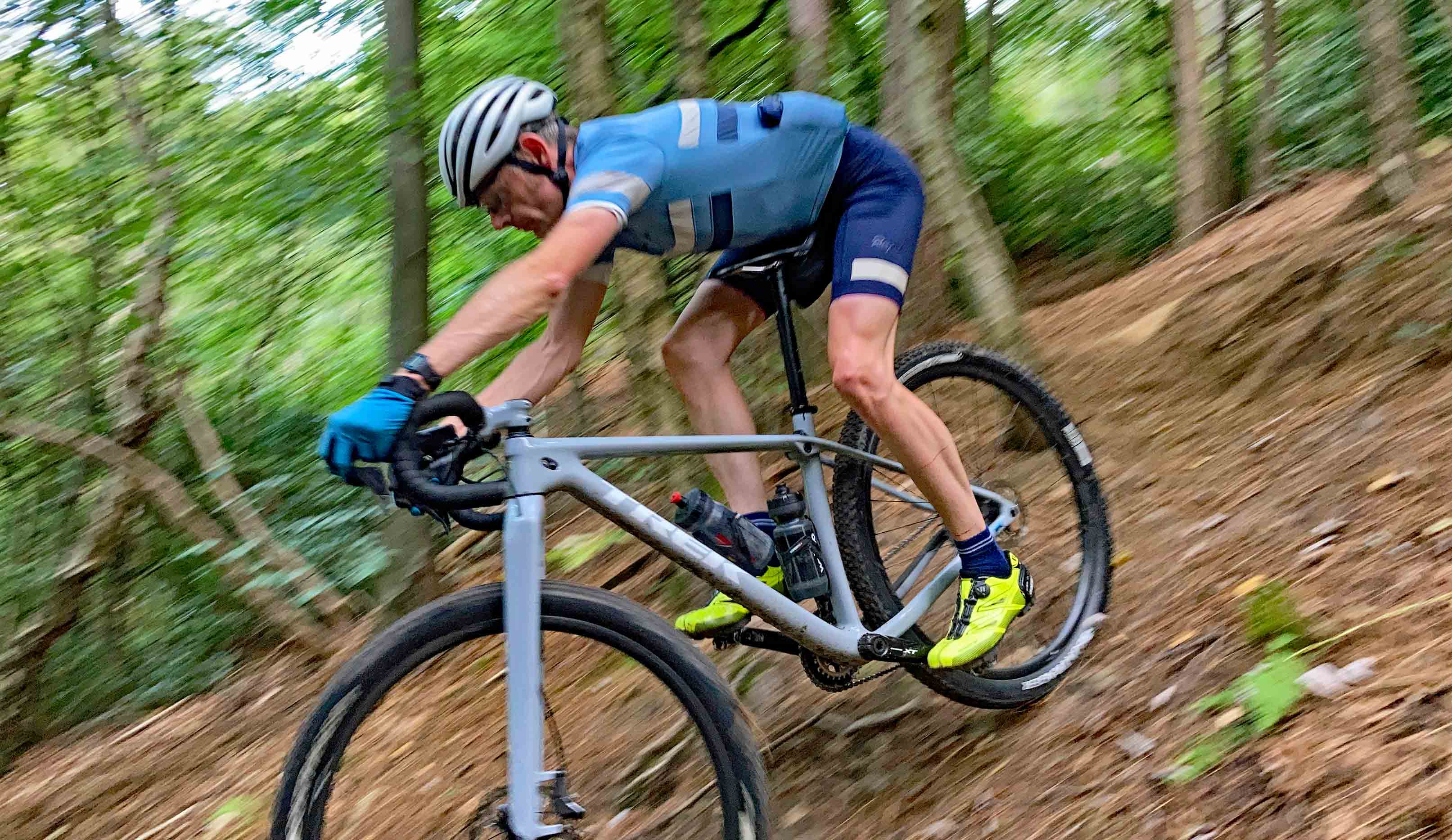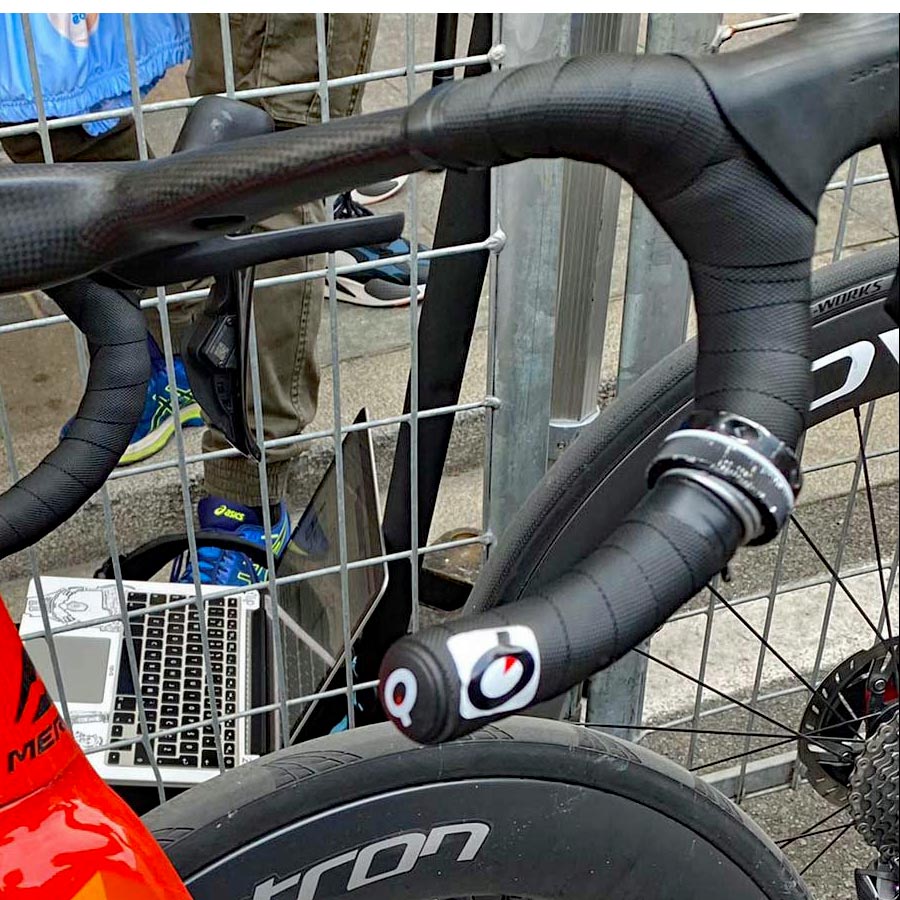In the last 10 years, one of the most significant tech developments in the mountain bike world has been the dropper seatpost. As the name says, a dropper post allows you to alter the height of your saddle by the flick of a lever to change from an optimised pedalling position to one which you can move around the bike to tackle technical terrain.
Photo courtesy of Easton Cycling
Alongside other crossover mountain bike features such as suspension, we’re starting to see dropper posts spec’d on gravel bikes. But bikes like these are still in minority. In fact, many gravel frames aren’t optimised to fit a dropper and its cabling. Does this slow adoption reflect that running a dropper on a gravel bike is a niche that many of us aren’t interested in? Or are we just a bit slow on the uptake and they’re about to become as ubiquitous as they now are on mountain bikes?

Photo courtesy of Matt Wragg
Why bother?
One of the common responses (in the media and most of my riding friends when I asked) is that it’s not worth running a dropper post on a gravel bike. That’s because we think the tyres and/or geometry of our gravel bikes limit the level of steep and technical riding far before you risk going over your bars. But being able to shift your weight over the back on steep trails is only a small part of the benefits of having a lower saddle.
With your saddle lower, you can move your body weight around much more freely around the bike and importantly lowering your centre of gravity to get much more weight through the pedals and so the bottom bracket and the tyres. In turn this will give you tons more grip and so more control. And with more control you can access more speed.


Images courtesy of Bahrain Victorious
"I’ve been surprised how much I’ve utilised it and how much it’s benefited my riding"
Whilst these benefits are more significant on rough terrain, they can apply on tarmac too as demonstrated by Matej Mohoric in the 2022 Milan-San Remo. Being low on the bike will also help you tuck out of the wind.
Being a mountain biker, I wasn’t against droppers but didn’t think it would make much difference to how I rode my gravel bike. I also didn’t want to spoil the simplicity of my bike by adding something that would need a bit more maintenance and a bit more thought to use. But having ridden with a dropper post fitted to my gravel bike regularly over the last few months I’ve been surprised how much I’ve utilised it and how much it’s benefited my riding (un-objectively measured by the fun-factor and feeling of control).

Image courtesy of Helen Schonenberg
The biggest difference has been on fast and loose descents. Without a dropper post I feel I’m teetering on the top of the bike and scrubbing my speed to avoid washing out in corners. But with my saddle and weight dropped, the feeling is completely different. I feel in control and I’m no longer terrified that I’m about to be covered in gravel rash. And I’m faster too – over the last few months of running a dropper on my gravel bike I’ve notched up many PBs on long and short descents as well as nippy singletrack riding when I’ve been able to move both me and my bike around a lot faster.
It's not just about descending either - you can use a dropper post to your advantage on technical climbs or where other riders have caused a temporary "traffic jam". The ability to lower your saddle can give your more flexibility of line choice, or just make it easier to get on the bike when the gradient or the surface of the climb would make it a challenge with a fixed height saddle.
"I feel in control and I’m no longer terrified that I’m about to be covered in gravel rash"
The case against
Of course, it’s not all one sided, there are reasons that you won’t want a dropper on your gravel bike, even if you are convinced by the argument of getting more control. Obvious things like cost, weight and the hassle of fitting it to your bike all come into it.
Cost-wise there’s a huge range of posts available nowadays with prices ranging from £100/€115 to over £500/€573. The technology is so good that even posts at the cheaper end of the market are great performers, albeit tending to be heavier and less smooth mechanisms than the more expensive end. The majority of posts are easy to service either by a confident home mechanic or a professional which means you can do a lot to keep them running smoothly for a long time to come.
"It’s not all one sided - there are reasons that you won’t want a dropper on your gravel bike"

Some riders like Gravel Union’s editor aren’t interested in using a dropper, but this looks a little precarious….
Gravel-orientated dropper posts weigh around 350-500g plus another 30g-odd for the lever and a bit more for the cable. This is easily twice as much as a standard seat post will weigh. If you’re a weight-weeny it will be something that you’ll want to avoid, for others it will be a matter of balancing the benefit of a dropper against the weight it adds (see ‘disc brakes’ for a well-practiced argument….)
If you run a saddle bag for small spares or bike packing it is harder to accommodate a dropper post too. The seatpost strap on the bag will likely foul the stanchion and the whole bag might hit the rear tyre when you drop your saddle. There are a couple of inverted dropper posts on the market that get round at least the first problem. Other options include using jersey pockets/frame/bar bag for day-to-day spares and switching to a standard post when bike packing.
Dropper curious?
Is this enough to tempt you to try a dropper on your gravel bike? Or are droppers best left to mountain bikes? If you’re in the first camp, read on. If you’re in the latter group, well done for getting this far.
Whilst you could use wanting a dropper post as an excuse for a new gravel bike, you can always add one to your existing set up. Dropper posts are easy to retro-fit, choosing one that will work with your bike can be a bit trickier though.
There are some ‘gravel’ specific dropper posts but that’s really only in the name. There’s nothing fundamentally different about a mountain bike dropper than one that will suit your gravel bike, it just needs to fit.
Size matters
Most gravel bikes have road bike DNA so take a 27.2mm seatpost and have a relatively short length of exposed seat post. This means you’re likely to be looking at a dropper post that’s up to 100mm drop. Generally, you’ll want the greatest length of post that you can fit in your bike, the more space you can access, the greater the benefit you’ll reap.

Image courtesy of Helen Schonenberg
You also need to make sure that you can accommodate the required insertion length in the frame, it’s much more than the 100mm-ish of a standard seatpost. Tube kinks or shaping as well as bottle cage bosses can limit this and the drop you can run might be as limited by what’s available internally as well as externally.
Cabling
The vast majority of droppers are activated by a cable running from the post to the bars. Other posts use electronics or a hydraulic hose and there are also under the saddle lever operated systems. For cable or hydraulic activated systems the cable (or hose) is either internally or externally routed. On an internally routed post the cable is attached to the base of the post, runs through the frame before emerging from a port near the head tube before attaching to a lever on your bars. This is the most common system and many manufacturers only produce internally routed posts. This can be tricky if your frame isn’t designed to accommodate this extra cable although many 2x compatible frames will. If your frame won’t take the extra cable or it doesn’t run smoothly round the bottom bracket then an externally routed or wireless post will be a better choice.
"Unlike in the mountain bike world, riders and manufactures have yet to settle on the preferred drop bar lever design."
Activation
Unlike in the mountain bike world, riders and manufactures have yet to settle on the preferred drop bar lever design. All cable posts use the same straight-pull cable actuation so it’s easy to combine levers and posts from different manufactures to suit your set up and hands.


Image courtesy of James Deane
Image courtesy of Bahrain Victorious
Most drop bar specific levers fit in the drop and are activated with your thumb, these have to balance ease of activation with not fouling your grip. There are a few higher end ones that sit in the drops which can be activated from the drops or the hoods. Other levers are designed to fit on the flats, either centrally or nearer the hoods. These levers either work by curling round the circumference of the bar or have a lateral throw like a flat bar gear shifter. These are much less likely to affect your grip and tend to have better pull mechanisms but you will likely need to move your hands from where they are to activate the post.
Another neat option for cabled posts is utilise the Shimano GRX ST-810-LA left hand lever, the 1x specific lever which allows you to operate your dropper as it would a front mech. I’ve run loads of lever and posts recently and it’s by far the neatest, easiest to operate and reliable lever I’ve tried.
And finally….
If you are thinking about giving it a go the sizing and fitting of dropper posts can be tricky. It’s one of those jobs where asking your local bike shop to help you is well worth it. After that, the riding part is all yours.
rachel sokal
It’s a frequently used trope that gravel bikes are just 1990s mountain bikes. We don’t agree with this, but increasingly we’re seeing MTB technology crossover into our gravelly world. Rachel Sokal dives into this slightly contentious world and looks into the pros and cons of running a dropper post on your gravel bike.